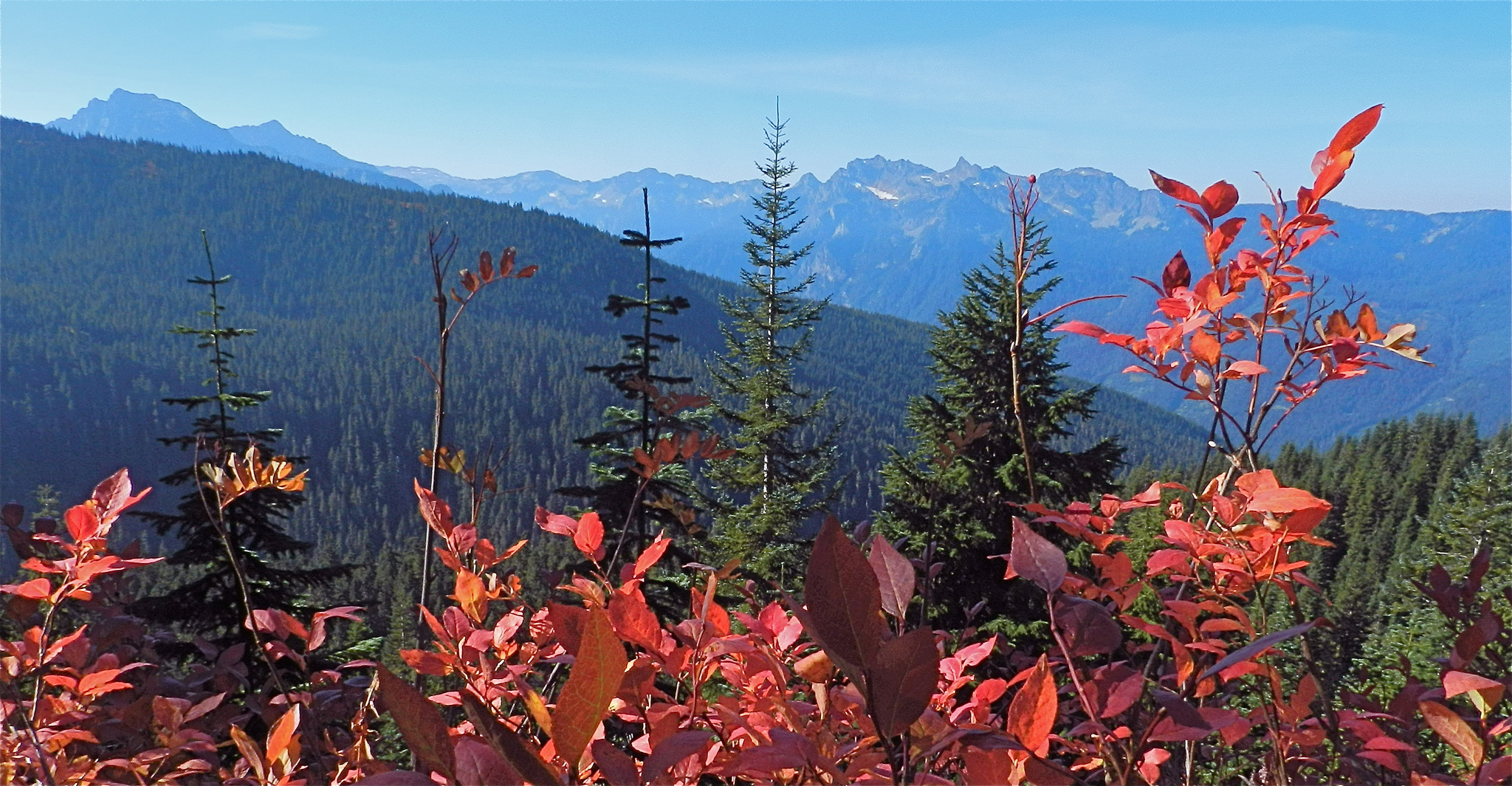This post was originally posted on Native Plants & Wildlife Gardens.
A few months back, the thought of a flush of new green leaves was on my mind and I wrote 3 Pacific Northwest Plants for Winter. Now we’ve come full circle in the seasons and my thoughts turn to those leaves which are now turning such brilliant and spectacular colors. Autumn is by far my favorite time of year and the changing colors of the leaves certainly plays a large part in why this season is the one I look forward to most. I have many memories of visiting the forests in the fall and seeing the most magnificent landscapes.
While I can’t plant a whole forest in my yard, I can include a few plants which provide beautiful color every year. Here are three that will guarantee you some beautiful autumn days.

Vine Maple (c) Carol Kohler
Vine Maple (Acer circinatum)
This plant can be a small tree or a large shrub depending upon how it grows. In the forest where it’s shady, it grows long and spreads out (which makes it a fantastic jungle gym for kids, I speak from experience). In a sunny, more open area it can be grown with a single trunk and be more of a tree. The leaves are lobed, but the shape is nearly circular and when they emerge they are yellow before turning green. In the fall they turn a brilliant red and gold. It’s a jack of all trades plant which grows well in disturbed sites and is good for erosion control. It also provides numerous benefits for wildlife including seeds which many species of birds eat including finches, nuthatches, grosbeaks and even quail. There are multiple species of moths who use this as a host plant and the twigs are munched on by mammals such as deer and beaver.
Red Huckleberry (Vaccinium parvifolium)
The name of this native huckleberryactually comes from the color of the berries and not the leaves, although the fall color of this shrub is quite red. We often shunned the poor red huckleberry for the juicer and sweeter blue berries but the red has it’s own good taste. It can be used in baked goods, jams or simply eaten raw. It grows in the lowlands of the Pacific Northwest often in the sun or part shade where it produces the most abundant fruit. It is also not a shabby wildlife plant providing fruit for many birds including bluebirds, thrushes, grouse, and towhees. Many mammals also eat the berries including deer, mice, raccoons, beaver, skunk, foxes and squirrels. To benefit from this delicious plant takes a bit of extra effort as it likes to grow in decaying wood so be sure to provide this when establishing the huckleberry in your landscape.
Serviceberry (Amelanchier alnifolia)
You would be hard-pressed to find a list of native plants for wildlife without this shrub near the top. All year long it provides food for wildlife, in the spring the clusters of white, fragrant flowers provide nectar for butterflies, hummingbirds and bees and the leaves are a buffet for butterfly larvae. The dark purple berries, which start to form right after the flower fades, provide a full feast for many birds including chickadees, crows, thrushes, towhees, waxwings, woodpeckers, goldfinches, juncos and even more. Many mammals also eat the berries including chipmunks, squirrels, skunks and foxes. A few mammals even browse on the twigs including deer and elk. In addition to this the plant also provides us with some lovely range of yellows, reds and oranges.








